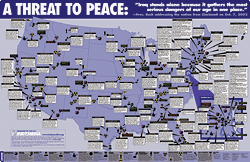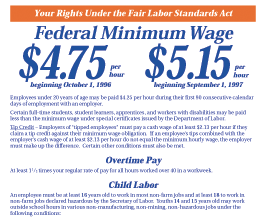posters
The Committee to Help Unsell the War
In 1969, Arkansas Senator J. William Fulbright, announced the results of his investigation into the Defense Department’s lavish spending on propaganda and self-promotion during the Vietnam War.
Mitchell Hall writes in Unsell the War: Vietnam and Antiwar Advertising, (Historian, Autumn 1995):
“From 1959 to 1969, the Pentagon’s public relations expenditures increased 1,000 percent to an acknowledged $27.9 million, a figure Fulbright called ‘conservative.’ With this financing and a full-time public information force of 2,800 people, the military enjoyed overwhelming access to the public. In 1968 the navy and marines sent over 2.8 million news releases to 12,000 print and broadcast media outlets, in 1969 armed forces performances ranging from musical groups to aerial demonstrations played to audiences estimated at 20 million, and over 360 commercial and educational television stations used the U.S. Army-produced TV show ‘Big Picture.’ The potential influence on public opinion and foreign policy was enormous.
U.S. presidents from Harry Truman to Richard Nixon had also tried to persuade the public that events in Indochina demanded a U.S. military presence. Their efforts initially succeeded, but by the late 1960s millions of Americans had publicly demonstrated their rejection of a policy that had brought increasing sacrifice, destruction, and stalemate. Nixon’s Vietnamization policy, which gradually removed U.S. ground troops but escalated the bombing, partially defused antiwar activity by early 1971. Decreasing U.S. casualties convinced many people that the war was winding down. Although massive public demonstrations occurred less frequently than before, citizens in the early 1970s continued to work to end the war in numerous and creative ways.
On February 23, 1971, CBS broadcast the documentary “The Selling of the Pentagon.”
“Reiterating many of the points addressed in Fulbright’s report, this hour-long program examined the Defense Department’s public relations efforts that, in addition to recruiting volunteers and providing information, marketed a specific interpretation of the Vietnam War and the cold war to the U.S. public....
The military establishment annually arranged hundreds of public contacts that included shopping mall exhibits, Green Beret hand-to-hand combat demonstrations, and tours by flight teams such as the Thunderbirds. In clear violation of regulations, a select group of colonels avidly promoted the U.S. presence in Vietnam in speeches they gave around the country. The Defense Department also provided weekend guided tours of military installations to VIPs, who could observe war games from a grandstand and personally fire tank guns and artillery.
Films also propagated the military’s ideology. The Pentagon cooperated with Hollywood producers who portrayed the military favorably and had celebrities and journalists narrate some of its own movies....
The Defense Department achieved its widest exposure through the news media. Daily briefings to the national press yielded only carefully selected information from the Pentagon’s public relations division. The armed forces also maintained their own media arm, producing over two million press releases each year. Local newspapers generally snapped up uncritically this flood of news about the awarding of medals and promotions. Military television crews provided combat footage to supplement network coverage but often staged the action. Similarly military officials frequently held pre-interview briefings with soldiers in the field to ensure a standard acceptable story before allowing network TV reporters access to them. CBS questioned the impact on a democratic society and free press of a vast military information system that portrayed violence as glamorous, advertised expensive weapons like cars, and presented biased opinion as fact.”
Ira Nerken, a junior at Yale University studying political science, missed the initial broadcast of ”The Selling of the Pentagon” but read about the controversy it provoked. He decided that the war could be ‘unsold’ to the American public. Print ads had occasionally appeared in leading newspapers, and ad hoc groups produced some radio and television spots, but the advertising world had never been tapped on a large scale.
After discussing his ideas with an instructor at Yale, the instructor introduced him to David McCall, president of LaRoche, McCaffrey & McCall, an ad agency in New York. McCall and James McCaffrey, the agency’s chair, quickly organized a team that produced a poster and letter of explanation seeking support for a campaign to unsell the war. These were sent to 80 executives in 60 agencies.
The initial poster featured a drawing of the Pentagon and the headline, “Help unsell the war.” It read:
“C.B.S. recently devoted an hour to documenting the enormous advertising and public-relations job the Pentagon has done to sell the American public its version of the war. A group of students and faculty at Yale University are asking the men and women of the advertising agency business who disagree with the Pentagon’s version of the war to create advertising in all forms that will help unsell the war.”
The letter closed:
“Needless to say, we are not interested in cheap, superficial, anti-American work, we are interested in thoughtful and honest advertising, created by people who love their country.
I hope you will agree with me that this is a vital contribution which our business can make. If you do not agree, I can understand that, too. But the Pentagon’s side of the story has been ably and massively told. Ours has not.”
 Interested ad executives were invited to briefing at Yale University on April 3, 1971.
Interested ad executives were invited to briefing at Yale University on April 3, 1971.
“Over two hundred New York advertising people attended the early April briefing at Yale’s law school auditorium. Paul Warnke, former assistant secretary of defense, and Morton Halperin, former deputy assistant secretary of defense, explained Nixon’s Vietnam policies, and both urged setting a deadline for total withdrawal of U.S. troops. A representative of Vietnam Veterans Against the War discussed war crimes and problems veterans faced. A member of Concerned Asian Scholars described corruption within the Saigon government and the spreading antiwar feeling in South Vietnam. A person from the Herbicide Assessment Commission to South Vietnam showed slides of defoliation and crop destruction, and a former ABC correspondent in Vietnam detailed the strained relationship between the press and the military. Perhaps the most influential speaker was Milton Rosenberg, professor of social psychology from the University of Chicago. He identified the constituencies most ambivalent about the war and the arguments most likely to turn them against it: the deaths of U.S. troops, the economic consequences for the United States, and the creation of national discord.”
After the briefing, the attendees were asked to produce ads to be reviewed on May 1 by a panel that included Kingman Erewster, president of Yale; Mort Halpern, former Deputy Assistant Secretary of Defense; Dr. Edwin Reischauer, former Ambassador to Japan, and Gen. David M. Shoup of the United States Marine Corps (retired.) The panel would evaluate the ads and eliminate those that were inaccurate, unfair, or inferior.
On Memorial Day, May 31, the ads and commercials were to be displayed and distributed to the media to run as a public service.
Over 300 writers, artists, directors, and producers from nearly 50 ad agencies contributed an estimated $1 million of time and expenses. As of June 8, 1971, 125 print ads, 33 TV commercials and 31 radio spots had been produced. Given the expense of reproducing the ads, only a handful were sent to media outlets.
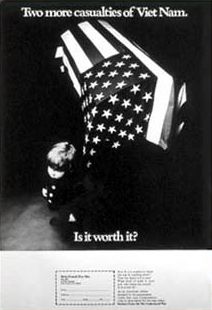 Though the Committee never did convince the major broadcast networks to air the ads, over 100 TV stations and 350 locally owned radio stations around the U.S. did run the spots. During the summer of 71, Nerken was able to arrange free time on 285 billboards around the country. Many of the ads urged people to elect representatives who would vote to end the war by the end of the year.
Though the Committee never did convince the major broadcast networks to air the ads, over 100 TV stations and 350 locally owned radio stations around the U.S. did run the spots. During the summer of 71, Nerken was able to arrange free time on 285 billboards around the country. Many of the ads urged people to elect representatives who would vote to end the war by the end of the year.
“With its attention focused on production rather than marketing, Unsell encountered additional problems inherent in the campaign. It lacked a built-in constituency or the organizational resources to conduct a national distribution effort. Local media felt little pressure to run ads offered by mail from New York. The result was a relative lack of success in getting messages on the air and in print. Because many ads focused on U.S. casualties, the sell became harder as Vietnamization brought more U.S. troops home in favor of an escalated air war, diluting one of the Unsell campaign’s central themes.”
In 1972, the expense and demands of the campaign ultimately led to its transfer to Clergy and Laymen Concerned, the nation’s largest religiously oriented antiwar organization. The focus of ad production also shifted from New York City to Hollywood. The CALC’s network of local chapters were also able to decentralize the task of contacting local media for free time and space. National organizations such as the American Friends Service Committee, Another Mother For Peace, and the Fellowship of Reconciliation also urged their members to get involved in the campaign.
In addition to the decline in U.S. casualties, the ongoing financial burden of the campaign and the 1972 presidential election slowed the momentum of the project which ultimately ended after the reelection of President Nixon and his announcement in January 1973 of an accord with North Viet Nam to end American involvement in Indochina.
The Library of Congress has several thumbnail images of posters produced by the Committee. Click on ‘Preview Images.’
A Threat to Peace, U.S.A.
“The Indypendent - the monthly newspaper of the NYC-Indymedia Center proudly presents ... A Threat to Peace - a handy poster-sized color map of U.S. terrorist infrastructure.
Whether you’re a budding weapons inspector or just a trivia buff, A Threat to Peace can give you the scoop on nuclear manufacturing facilities, chemical and biochemical weapons facilities, weapons manufacturers, nuclear testing and launch sites, and much, much more.”
Download the poster or order one.
Points of interest include:
- Chemical Weapons
- Domestic War Criminals
- Imported War Criminals
- Private Mercenary Companies
- Military Sites
- Biological Weapons
- Nuclear Weapons
- Terrorist Training Camps
- Rest & Recreation
- Militarization of Space
- Major Weapons Makers
- Universities, Policy Institutes & Think Tanks
- Nuclear Facilities
- Ballistic Missile Defense
Graphic Designers Against the War in Iraq

“ANTI-WAR.US is dedicated to the free distribution of anti-war graphic material.
As creative individuals trained in methods of mass-communication, we can make a real difference by providing clear anti-war messages.
All materials on this site are created voluntarily and distributed free to activists around the world.”
A nice idea. I’m kicking myself for not thinking of it. Will send one of my own poster ideas shortly.
I do hope they will excercise some curatorial judgement, though. I’m a long-time admirer of Charles Wilkin’s design work. I’ve even used one of his fonts, but painting President Bush in the same league as Stalin and Hitler does not help the credibility of your cause.
via American Samizdat. Image above by M. Musri, Fabrica.
Posters for Workers (and the People Who Employ Them)
“Some of the statutes and regulations enforced by agencies within the [U.S.] Department of Labor require that notices be posted in the workplace. The Department provides electronic copies of the required posters. Some of the Department of Labor’s posters are available in languages other than English. They are also available in electronic form.”
More are not very beautiful and seem designed by bureaucrats, but they must be posted in a conspicuous place as a notice to employees and a warning to employers. The posters implicitly call on employees to monitor the complience of their employers, and some even provide phone numbers and contact info. They are designed in a no-nonsense institutional non-style, that speaks of authority and bureaucratic indifference.
Are you a confused employer? The Department of Labor even has an online an electronic walkthrough of the poster requirements and laws.
Many states have their own posters and requirements, too. The posters generally fall into the following areas: minimum wage and age, job safety and health, information about emergency family medical leave, worker’s compensation, and polygraph and equal opportunity protection.
None of the posters I found address your federally protected right to organize and form a union in your workplace — though South Carolina, a “right-to-work” state, describes this right in their big labor law poster.
Below are a sampling of posters produced by the states.

In addition to their statutory language version, Oklahoma provides a plain language version (shown), complete with color photos and clear subject headings.

Tennessee’s poster for employees offers a loud warning for those would forget their rights.

Child labor law == happy kids. Just like in the clip art of this Kansas poster.

Hawaii’s posted is clear and direct, with a splash of color.

Because the information on this South Carolina poster is so organized, I don’t think the poster was consciously designed to be obscure. But what employee would read such a dense poster in the kitchen?
There are also companies who market compliance, selling laminated, redesigned, all-in-one versions of the posters.
Antiimperialistisch Solidaritat

Like the international solidarity work of Cuba, the government of East Germany
“strongly advocated for anti-imperialism and declared general freedom and solidarity with numerous countries including Chile, Uruguay, Vietnam, Laos, Angola and Palestine among others up until the fall of the Berlin Wall in 1989.”
Transnational Poster Art: International Solidarity and East German Poster Art is an online exibit of over 30 posters
“all of which were designed in the former German Democratic Republic (GDR), and whose production was funded and encouraged by the East German government. The viewer will also encounter some posters produced in Nicaragua and Chile which compliment the East German ones in terms of content, and other types of artwork created by Germans as well as Latin American citizens. Our purpose is to show the GDR’s foreign policy towards developing countries during the 1970’s and 80’s, a foreign policy which the East German government strove to reinforce and legitimize through this popular art form.”
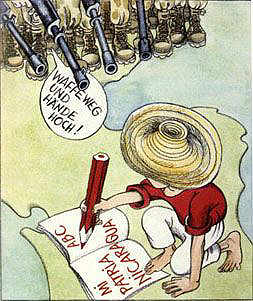 The introductory essay proposes that in addition to this legitimation, the posters fostered an awareness of international political situations, reminded the East German population of communist movements around the world, reinforced the idea of the U.S. as a common enemy to those movements, and that the foreign policy (and its promotion) were also an effort to “one up” West Germany and to gain approval and clout from the Soviet government.
The introductory essay proposes that in addition to this legitimation, the posters fostered an awareness of international political situations, reminded the East German population of communist movements around the world, reinforced the idea of the U.S. as a common enemy to those movements, and that the foreign policy (and its promotion) were also an effort to “one up” West Germany and to gain approval and clout from the Soviet government.
The posters are organized as follows:
- History: GDR Poster Art
- GDR Poster Art and Chile
- GDR Poster Art and Nicaragua
- GDR Poster Art and other Latin American Countries
- GDR Poster Art and other Developing Nations
- Anti-USA Posters
The poster up top is by Alexander Schiel, titled “‘In our hands, God has put the destiny of a troubled humanity.’ — US President Reagan,” 1983. The poster on the right is “Untitled (Literacy),” 1984, by Barbara Henninger. The American troops are saying “Drop your weapons and put your hands up high!” to the Nicaraguan boy, learning to write, spells out “Nicaragua my mother country.”
Other East German poster art and propaganda can be found at the German Propaganda Archive, see
- Caricatures from Eulenspiegel, the GDR’s weekly humor magazine, 1953
- Posters from the 30th anniversary of the GDR in 1979
- Eulenspiegel cartoons, 1985-1989
- Labor related propaganda from workplace Wandzeitungen — bulletin boards or “wall newspapers,” 1988 and 1989
Center for the Study of Political Graphics
“There has never been a movement for social change without the arts — theatre poetry, music posters — being central to that movement. Political posters in particular are powerful living reminders of struggles worldwide for peace and justice. Communication, exhortation, persuasion, instruction, celebration warning: graphic art broadcasts its humanity through bold messages and striking iconography.
The Center for the Study of Political Graphics (CSPG) is a nonprofit, tax-exempt educational archive that collects, preserves, documents, and exhibits domestic and international posters relating to historical and contemporary movements for peace and social justice....
The archive includes more than 35,000 posters produced in a staggering array of visual styles and printing media, dating from the Russian Revolution to the present. University, museum, and public collections of this material are rare, and because those that do exist are seldom accessible to the public, CSPG’s commitment to continually exhibiting this rich visual and social history is so critical....
The Center was recently awarded a major grant from the Getty Grant Program to implenient a state-of-the-art electronic cataloging system designed to make the collection even more accessible.”
I do hope “more accessible” includes publishing more of their collection online. On the CPSG site, the exhibit Presidential Rogues Gallery: Satrical Posters 1960 - Present features a mere 11 images. The Sixties Project has published another of the CPSG’s exhibits online. Decade of Protest: Political Posters from the United States, Cuba and Viet Nam 1965-1975 features 67 posters that were shown at the Track 16 Gallery in Santa Monica in 1996.
Though the center limits its collection to posters from peace and justice movements, a thorough study of propaganda technique would also include material from a right-wing point of view. Movements for peace and justice would also do well not to ignore grassroots conservative movements, their history and political graphics.
The image above is copyright 1971 by the Committee to Help Unsell the War, “a coalition of over 30 advertising agencies.”
The Art of the FBI
The FBI’s “counter intelliegence” program COINTELPRO was created in 1956 to neutralize political dissidents in the United States. Although the FBI’s COINTELPRO’s officially ended in 1971, there have been many examples of counterintelligence-type operations against political dissidents since. The 1976 investigation led by Senator Frank Church officially brought COINTELPRO’s mission to light:
“‘to expose, disrupt, misdirect, discredit, or otherwise neutralize’ such groups and their ‘leadership, spokesmen, members, and supporters.’ The larger objectives were to ‘counter’ their ‘propensity for violence’ and to ‘frustrate’ their efforts to ‘consolidate their forces’ or to ‘recruit new or youthful adherents.’ Field offices were instructed to exploit conflicts within and between groups; to use news media contacts ridicule and otherwise discredit groups; to prevent ‘rabble rousers’ from spreading their ‘philosophy’ publicly; and to gather information on the ‘unsavory backgrounds’ of group leaders.
One of their techniques was the use of “black propaganda,” bogus information that conceals or fakes its source. This included faked letters, poems, and satirical comic books to pit activists against one another.
Stay Free Magazine’s article “Fake Letters and Bad Poetry: Highlights from the FBI’s Secret War on Dissent” lists several examples:
Coloring Books
Previously mentioned here, the Black Panther Coloring Book was designed by the FBI to appear as if created by the Panthers. The books contained inflamatory pictures, some of which featured young black kids shooting pigs dressed as policemen. From the Church report:
 “One of the Bureau’s prime targets was the BPP’s free ”Breakfast for Children” program, which FBI headquarters feared might be a potentially successful effort by the BPP to teach children to hate police and to spread ‘anti-white propaganda.’ In an admitted attempt ‘to impede their contributions to the BPP Breakfast Program,’ the FBI sent anonymous letters and copies of an inflammatory Black Panther Coloring Book for children to contributors, including Safeway Stores, Inc., Mayfair Markets, and the Jack-In-The-Box Corporation.
“One of the Bureau’s prime targets was the BPP’s free ”Breakfast for Children” program, which FBI headquarters feared might be a potentially successful effort by the BPP to teach children to hate police and to spread ‘anti-white propaganda.’ In an admitted attempt ‘to impede their contributions to the BPP Breakfast Program,’ the FBI sent anonymous letters and copies of an inflammatory Black Panther Coloring Book for children to contributors, including Safeway Stores, Inc., Mayfair Markets, and the Jack-In-The-Box Corporation.
On April 8, 1976 in Executive Testimony a former member of the BPP Central Steering Committee stated that when the coloring book came to the attention of the Panther’s national leadership, Bobby Seale ordered it destroyed because the book ‘did not correctly reflect the ideology of the Black Panther Party.’”
Posters and Flyers
Paul Krassner writes in “The FBI and Me — An American Story”:
“In 1969, the FBI attempt to assassinate my character escalated to a more literal approach. I discovered this, not in the file kept by Cointelpro, the FBI’s counterintelligence program, but as part of a separate project calculated to cause rifts between the Jewish and black communities.
The FBI produced a ‘WANTED’ poster featuring a large swastika. In the four square spaces of the swastika were photos of Yippie leaders Abbie Hoffman and Jerry Rubin, SDS leader Mark Rudd, and myself. Under the headline ‘Lampshades! Lampshades! Lampshades! Lampshades!’ the copy referred to ‘the only solution to Negro problems in America’ as being ‘the elimination of the Jews,’ listed in the following order: ‘All Jews connected with the Establishment. All Jews connected with Jews connected with the Establishment. All Jews connected with those immediately above. All Jews except those in the Movement. All Jews in the Movement except those who dye their skins black. All Jews. (Look out, Abbie, Jerry, Mark and Paul!)’
The flyer was approved, once again, by [Kartha] DeLoach and [William] Sullivan [J. Edgar Hoover’s top two assistants]: ‘Authority is granted to prepare and distribute on an anonymous basis to selected individuals and organizations in the New Left the leaflet submitted..,. Assure that all necessary precautions are taken to protect the Bureau as the source of these leaflets [which] suggest facetiously the elimination of these leaders [to] create further ill feeling between the New Left and the black nationalist movement....’
And if some overly militant African American had obtained that flyer and ‘eliminated’ one of those ‘New Left leaders who are Jewish,’ the FBI’s bureaucratic behind would be covered: ‘We said it was a facetious suggestion, didn’t we?’”
Cartoons
 In their chapter on COINTELPRO and the New Left in The COINTELPRO Papers: Documents from the FBI’s Secret Wars Against Dissent in the United States, Ward Churchill and Jim Vander Wall reproduce an FBI memo [pages 1, 2] which lays out the Bureau’s plan to disrupt the New Left:
In their chapter on COINTELPRO and the New Left in The COINTELPRO Papers: Documents from the FBI’s Secret Wars Against Dissent in the United States, Ward Churchill and Jim Vander Wall reproduce an FBI memo [pages 1, 2] which lays out the Bureau’s plan to disrupt the New Left:
“Consider the use of cartoons, photographs, and anonymous letters which will have the effect of ridiculing the New Left. Ridicule is one of the most potent weapons which we can use against it.”
A further memo [pages 1, 2] details the plan to disrupt Students for a Democratic Society at Temple University through the use of cartoons, pamphlets and anonymous letters.
The cartoon displayed here was produced and distributed by the Philadelphia FBI office as part its plan to subvert SDS at Temple University. The caption, in a parody of the rhetoric of Sen. Joseph McCarthy reads, “I have in my hand a list of 200 names of people who don’t advocate the violent overthrow of the government.”
Mail Art
From Stay Free:
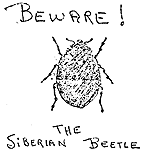 “The FBI believed that many New Left leaders had a weakness for spiritualist mumbo-jumbo, so a 1968 memo suggested mailing them anonymous cartoons such as the one pictured here. Subsequent mailings (from increasingly closer locations) could say ‘The Siberian Beetle is Black’ or ‘The Siberian Beetle Can Talk.’ Other proposed characters included ‘The Chinese Scorpion’ and ‘The Egyptian Cobra’ — anything with a sinister meaning open to mystical interpretation. According to FBI documents, the messages were intended to cause concern, mental anguish, suspicion, and distrust among their recipients.”
“The FBI believed that many New Left leaders had a weakness for spiritualist mumbo-jumbo, so a 1968 memo suggested mailing them anonymous cartoons such as the one pictured here. Subsequent mailings (from increasingly closer locations) could say ‘The Siberian Beetle is Black’ or ‘The Siberian Beetle Can Talk.’ Other proposed characters included ‘The Chinese Scorpion’ and ‘The Egyptian Cobra’ — anything with a sinister meaning open to mystical interpretation. According to FBI documents, the messages were intended to cause concern, mental anguish, suspicion, and distrust among their recipients.”
Poetry
From Stay Free:
“Socialist Workers Party leader George Weissman became the first subject of an FBI poem in 1964, shortly after being framed for stealing from a civil rights leader. According to an internal memo dated 4/10/64, the FBI mailed out an anonymous letter, along with this verse, to radical publications. The purpose was ‘to discredit the Party in the Negroe civil rights field.’”

Spoken Word
From Stay Free:
“In a 1963 internal memo, counterintelligence specialist Charles D. Brennan stated that civil rights agitation represented a clear threat to ‘the established order’ of the U.S. and that ‘King is growing in stature daily as the leader among leaders of the Negro movement.’ COINTELPRO head William C. Sullivan responded in a letter: ‘We must mark [King] now, if we have not before, as the most dangerous Negro in the future of this Nation from the standpoint of communism, the Negro, and national security... it may be unrealistic to limit [our actions against King] to legalistic proofs that would stand up in court or before Congressional Committees.’
Instead of sticking to the law, then, the FBI aimed to discredit King by any means necessary. Agents tapped his phone, bugged his rooms, trumpeted his supposed commie connections, and his sexual proclivities, and sicced the Internal Revenue Service on him. When it was announced in 1964 that King would receive a Nobel Peace Prize, the FBI grew desperate. Hoping to prevent King from accepting the award, the Bureau mailed him a package containing a tape of phone calls documenting King’s extramarital affairs and an anonymous, threatening letter (shown here in censored form). In barely concealed language, King was told to commit suicide before the award ceremony or risk seeing his ‘filthy, abnormal fraudulent self’ exposed to the nation. Fortunately, King ignored the FBI’s advice. He accepted the award and lived four more years until his assassination.”
Read more in Ward Churchill’s The COINTELPRO Papers: Documents from the FBI’s Secret Wars Against Dissent in the United States.
The Chicago Women’s Graphics Collective
“The Chicago Women’s Graphics Collective was organized in 1970 to create posters for the growing women’s liberation movement. The Women’s Graphics Collective used silkscreen to create large brilliantly colored prints in large quantities on a low budget. Later the group used offset printing for the more popular posters. The founders of the Graphics Collective wanted their new feminist art to be a collective process in order to set it apart from the male-dominated Western art culture. Each poster was created by a committee of 2 to 4 women led by the artist/designer. Thousands of posters were sold all over the world until the Graphics Collective dissolved in 1983.”
The Collective was founded as a ‘work group’ of the Chicago Women’s Liberation Union. From 1969-1977, CWLU members “dedicated themselves to developing grassroots programs for women while working toward a long term revolution in American society.” See the CWLU statement of purpose and list of programs. Though strongly affiliated, the Graphics Collective was autonomous from the CWLU and outlived the group by 5 years.
Find out more about the Graphics Collective, the CWLU, or browse through the gallery of posters . Subjects include the feminist uprising, abortion rights, a farmworkers solidarity boycott, ads for local events and facilities, the Vietnam war, and September 11, 1973.
Steun! Stem! Staak!
Support! Vote! Strike! From the International Institute of Social History, 150 Dutch social and political posters from 1870 - 1998. The posters are divided into twelve periods and two special themes. The index is in Dutch, so here’s my rough translation:
Danger Mines!
“Chrissy Levett, is a London-based designer and campaigner for Mines Awareness Group... a nongovernmental organisation which aims to clear mines and unexploded ordnance which are bombs dropped from aircraft, in war-torn countries. Levett created an accessible and effective visual system in order to reduce incidents of injury and death through land mines.”
There are a few images here, perhaps of her work.
Global Information Networks in Education is an international NGO whose Land Mine Awareness Education program produces posters, brochures, T-shirts, and other materals as part of its educational campaigns. Click on the country names here for region specific examples.
See also UNICEF’s International Guidelines for Landmine and Unexploded Ordnance Awareness Education.
And while on the subject, check out MineFinder, a Palm Pilot application from FedSoft.
“MineFinder lets you visually identify over 150 different types of landmines. An easy to use, graphic based system allows you to quickly determine critical information about any mine. Includes scaled drawings and detailed descriptions including size, weight, fuze type, and explosive content/type. Sort mines by type, characteristics, or country of origin.”
Not convinced? A testimonial on the product page from LT. Joseph Danilov, June 25, 2002:
“This is a great app. A must have for a NATO peacekeeping units stationed over-seas. I am no demolition expert but this manual was worth its weight in gold about 2 weeks ago. A 7 year old afghan child had found a M-22 AP mine, a.k.a. stepped on. The manual identified this mine and I defused it. Thank you very much to the maker of this application. Go Army.”
As the page says, use this software at your own risk.
page 19 18 17 16 15 14 13 12 11 10 9 8 7 6 5 4 3 2 1 Older »


